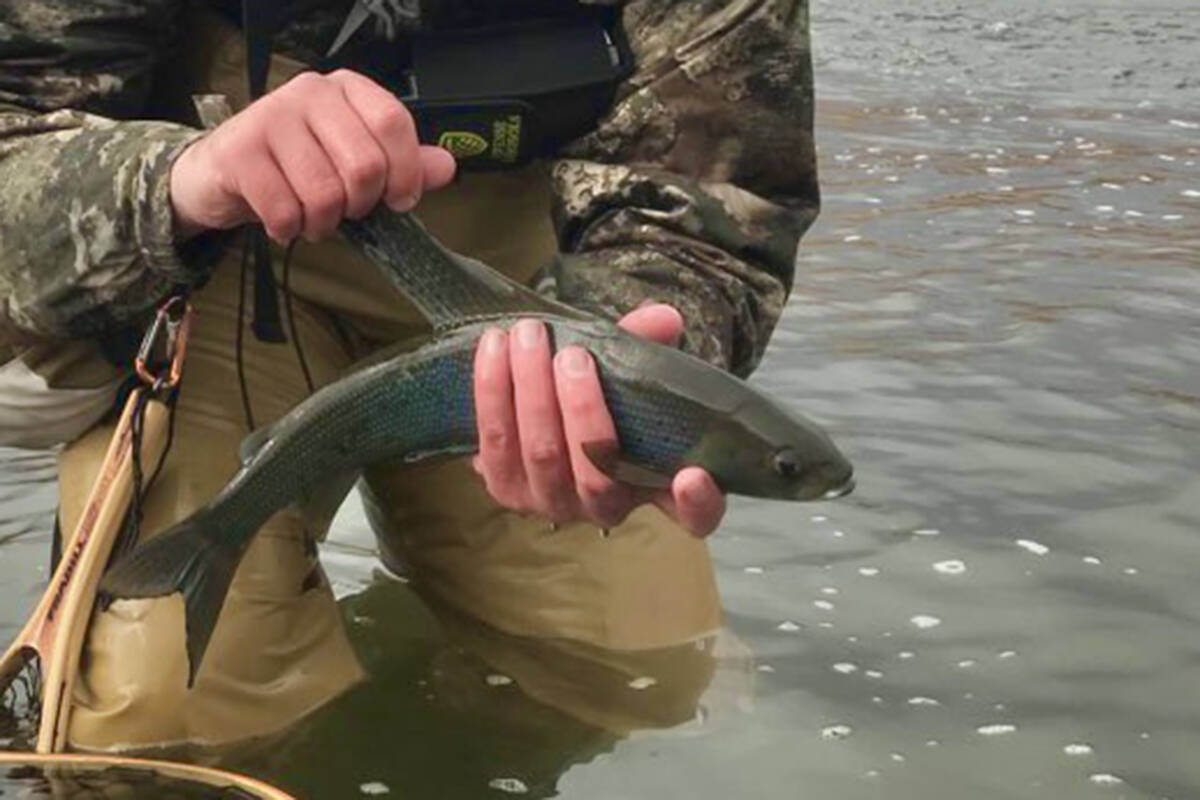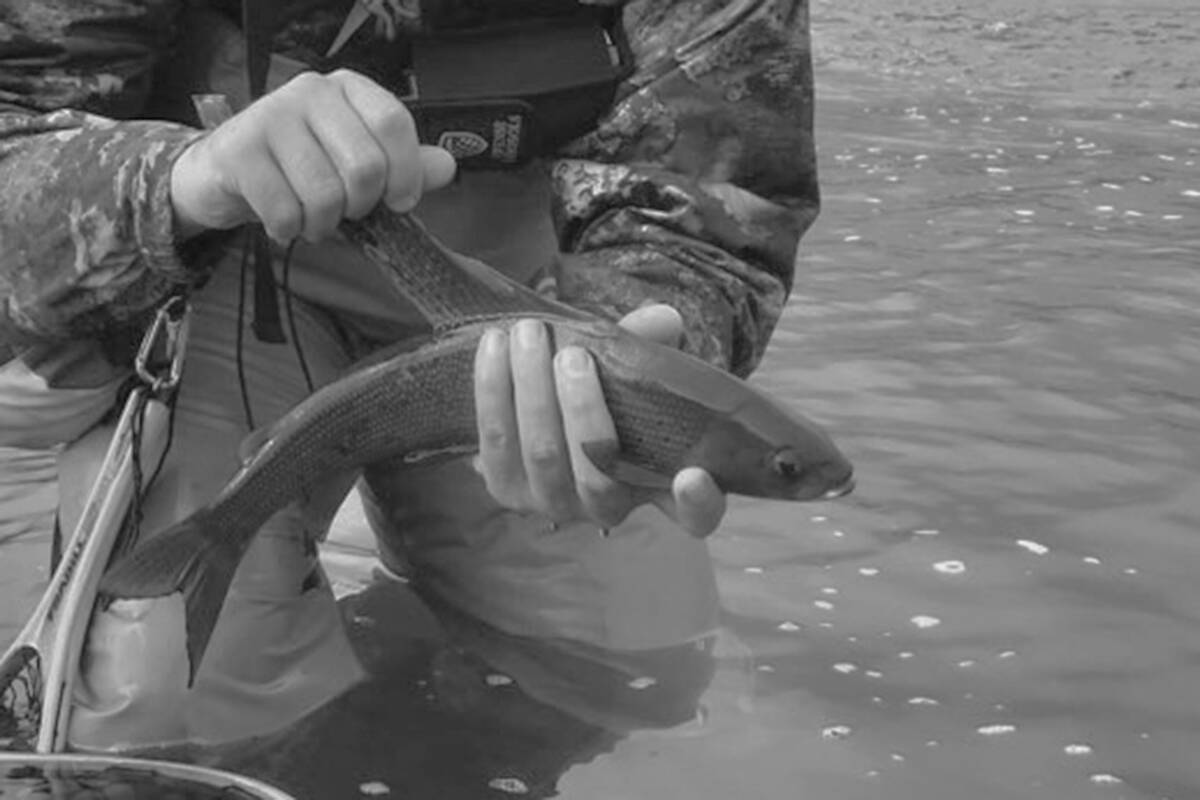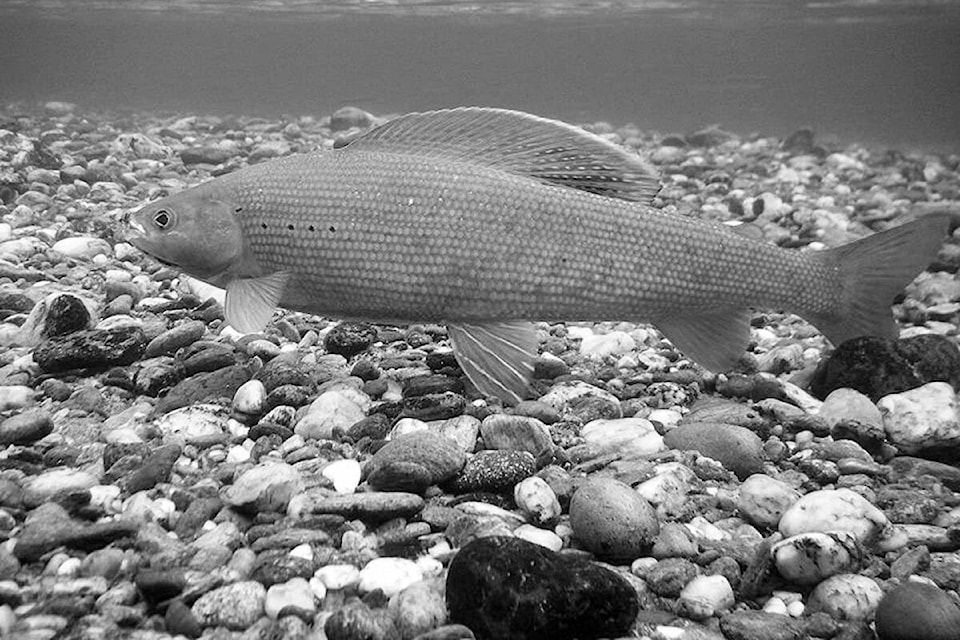The arctic grayling is such an iconic species of the Yukon that their silver bodies “aleap in the river” earned mention in the same stanza as mountain sheep and the caribou in Robert Service’s The Spell of the Yukon.
The sail-finned fish was the subject of a Jan. 12 online discussion hosted by an arm of the Yukon government that promotes wildlife viewing opportunities in the territory.
Senior fisheries biologist Cameron Sinclair led the Zoom discussion. He set out the fish’s life history, appeal to anglers and population health in the Yukon and across North America.
Grayling spawn in cold, clear running water in the days immediately following ice melting off the streams, usually late April through early June. Sinclair said the fish commence migration from their overwintering areas to their spawning grounds as the water temperature rises into the 2 to 4 degree Celsius range.
“They can travel a fair distance, although we think of grayling just being in a tiny little stream most of the time, or maybe in the lake. There’s been studies in North America that actually show these guys traveled over up to 70 kilometers to get to their spawning area,” Sinclair said.
A further rise in temperature sets off the spawning. Sinclair said the spawning fish are the ones that have reached age of maturity that ranges from three to six years depending on the specific population of fish.
Sinclair said in contrast to salmon, that build nests of redds for their eggs which can be seen by people, the grayling eggs fertilized after mating settle into the sand or gravel of the stream outside of any discernible structure. He said they can put down anywhere between 1500 and 30,000 eggs.
Once the eggs are settled in the gravel hatching comes very quickly compare to other species of fish that make their home in Yukon waters. Sinclair said juvenile grayling emerge from their eggs approximately 18 days after fertilization while the whitefish that live in the Yukon take months to hatch.
After hatching they seek shelter in slow moving water and undercut stream banks where they quickly pack on the size feasting on insects and other readily available food sources.
“They’re fairly voracious eaters. They even get hungrier when they’re adults and they grow really quickly because their diet is so varied, it’s not just eating one thing,” Sinclair said.
He said the juvenile fish can exceed 10 centimetres in length by the end of their first summer, fairly large for a fish that is only a few months out of the egg.
Sinclair said once the fish reach adulthood, they begin to seek out larger streams or lakes as their summer feeding ground. Average adults are about 30 cm in length.
As the temperature begins to drop again the fish seek good overwintering habitat, deep pools in rivers, larger lakes and larger streams where the water continues to circulate oxygen beneath the ice.
Sinclair said the grayling draw more interest from anglers than any of the Yukon’s other fish.
“One of the reasons is they’re easy to catch. You don’t need a lot of gear to angle for arctic grayling,” he said.
Along with being a good introductory fish for children or new anglers, Sinclair said their large dorsal fins and “arctic” label make them appealing to tourists.
Based on available information, Sinclair said the grayling populations in British Columbia, the Northwest Territories and the Yukon are apparently secure. The population in Alberta is imperiled and fish counts are secure in Saskatchewan and Manitoba.
South of the 49th parallel Sinclair said there is a critically imperiled population of arctic grayling in the state of Montana and a reintroduction program is underway to get them back in Michigan. Alaska has a secure population of grayling and Sinclair said they can also be found across the Bering Strait in Siberia and Mongolia.
In the Yukon, Sinclair said human pressure is the greatest threat to the grayling population. He said that doesn’t necessarily mean people should stop fishing for grayling but public angler education is important for maintaining their population health. Treating fish gently and respectfully, keeping them wet through a gentle release and using barbless hooks and rubberized nets when fishing are all steps that Sinclair said can be taken to ensure that released fish survive to reproduce.
Along with pressure from anglers, Sinclair said that sediment stirred up in water from industrial activity and construction also poses a threat to the survival of the fish. He said new industrial projects have to pass permitting and inspection to limit this but lots of older road construction did not have properly culverts and fragmented habitat for grayling and other fish.
On a larger scale he said climate change also poses a threat to the grayling and their cold-water homes.
“Grayling are probably not going to stop climate change even though people are concerned about grayling but it also may cause habitat fragmentation it may cause erosion of banks.”
Sinclair provided examples of developments done in a way that limited damage to grayling habitat and detailed areas where monitoring of the fish’s population coupled with public education had limited or reversed their decline.
If the population stays healthy their silver-backed migration will continue to be a sign of the return of warmer months for any Yukoner casting a fishing line or just their eyes into the territory’s lakes and streams.
Contact Jim Elliot at jim.elliot@yukon-news.com


